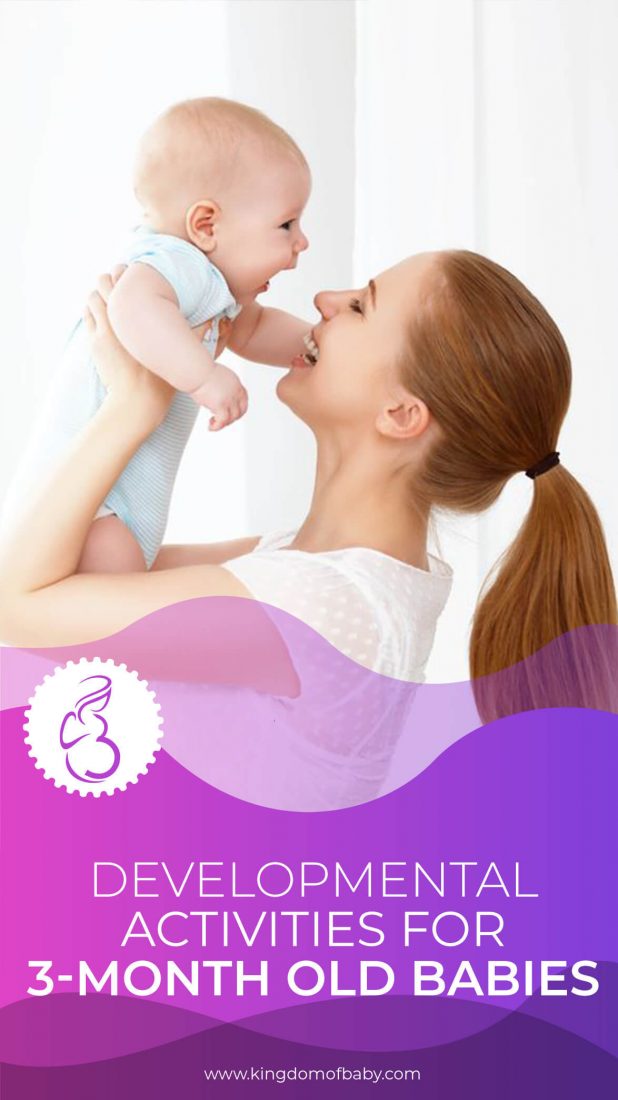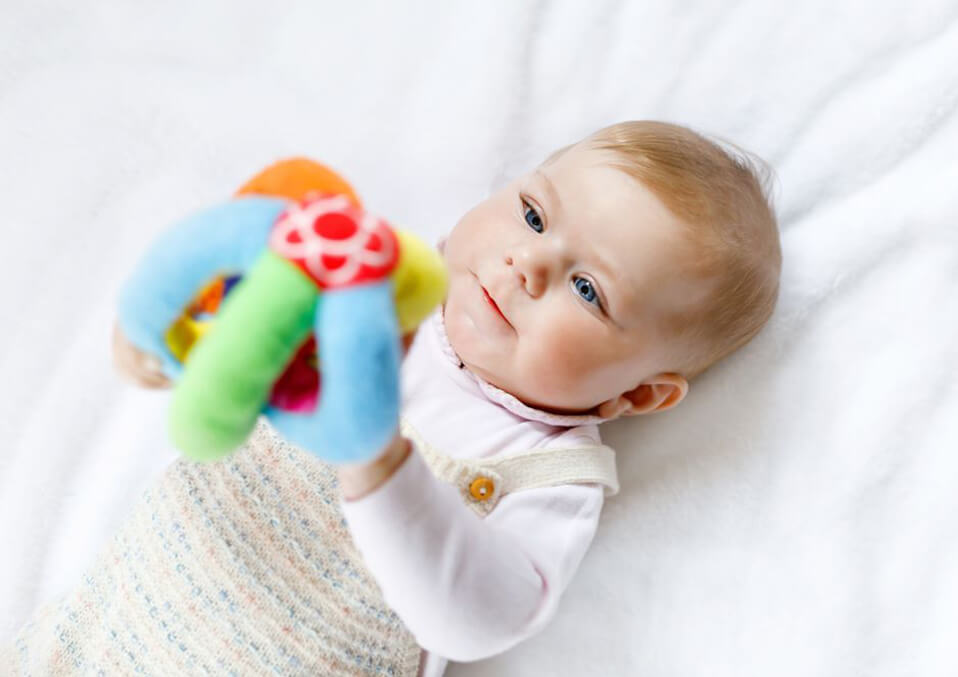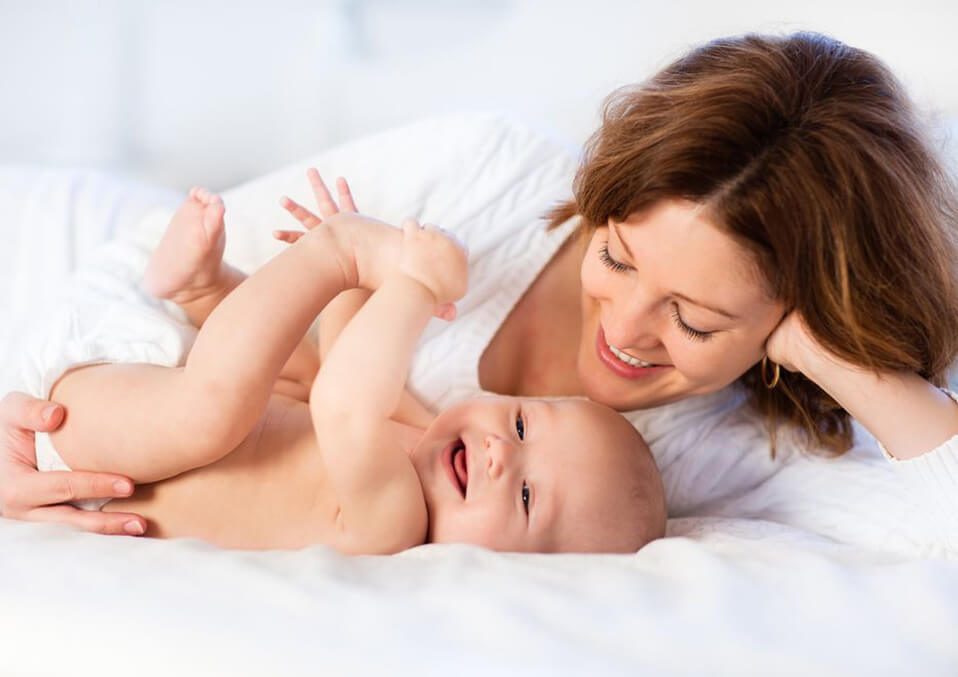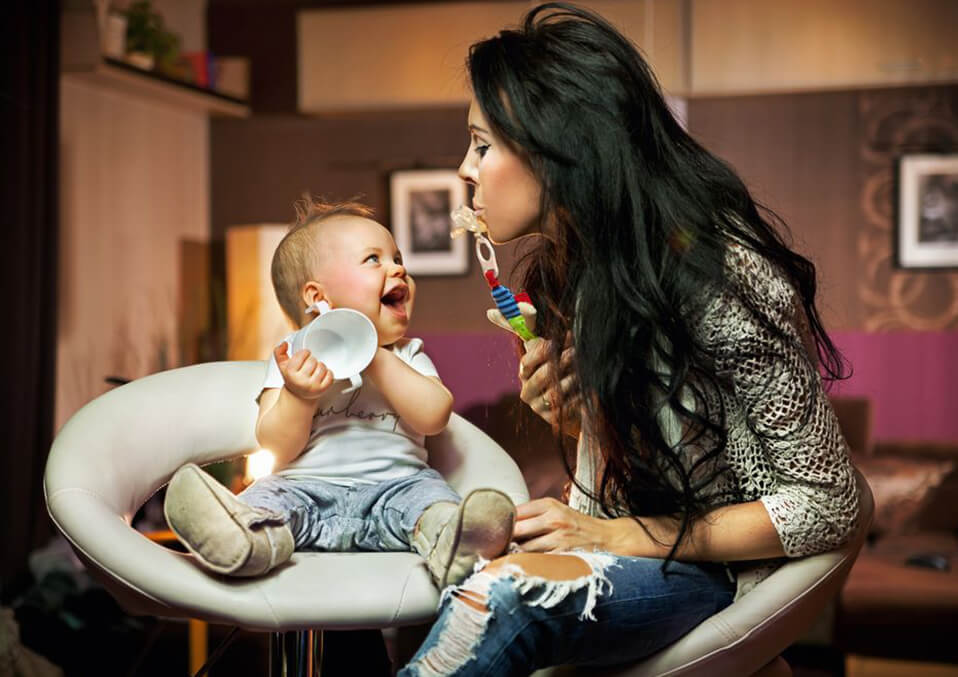
It’s been quite some time since the first day you saw your cute baby. As you count the days, you eagerly celebrate every milestone of your child’s progress. You proudly share these with your friends and relatives, documenting it with pictures and videos. Who can’t resist a baby’s charm and his early achievement?
As your baby turns three-month-old, she started to develop physically, emotionally and socially. At this age, there are certain activities that a baby can and expected to be able to do. Sensory and motor development are slowly taking place. As parents, you can help to motivate your children and assist them in their development.
Here are some activities for the different areas of development in three-month-old babies.
To improve fine motor skills

At the tender age of 3 months, babies can use their smaller muscles like the muscles in the hands, fingers, and wrists. At this phase, babies start grasping or holding toys, which they usually put into their mouth. They can also reach out to some objects. To assist babies in this phase, you can give them toys of different sizes and shapes for them to hold. Be sure that you are not giving them too small items that may pose a choking hazard. These items should be clean and made from non-toxic materials.
Read also: When does your baby start talking
You can also put toys near the baby but out of his reach. This will then encourage the baby to reach out for it extending his hands, arms, and fingers. Meanwhile, putting the baby’s hands together to clasp it or encourage him to clap can help to develop fine motor skills.
For the development of gross motor skills

Babies start to develop their gross motor skills approximately on their 90th day onwards. During this phase, a baby can make larger movements using either his arms, legs, feet or the entire body. Activities to strengthen the baby’s little neck, back and tummy can be done. One way is by putting the baby on your lap while she is facing you while supporting her neck and back. Encourage her to look up to you by making sounds, calling her name or giggling. She can switch from laying on her tummy or her back. Let her sit while you are supporting her or you can carry her. It encourages her to look around and see new things. You can also lay a baby on her back, put some toys or items that can promote head-turning on the baby to avoid having a flat head. Putting some toys on a baby’s chest can also help for her neck that strengthens it.
Enhance communication and imitation skills

At this stage, a parent can make a few noises and let the baby react. She can call the baby’s name while walking in different parts of the room. When the baby looks at her way, she responds with a giggle or any sounds or noises. Encourage the baby to imitate you. Or you can imitate the baby. This way, the baby will continue in this form of communication. You can also talk or sing which helps the baby to develop understanding a language.
Read also: Keeping track of your baby’s weight at the fifth month
Enrich learning skills
In this period, learning is being established. You can improve the baby’s learning skills through different activities. One is by calling your baby by her name. You can sing songs with her name on the lyrics. In this process, her name will become one of the first words that she can have an attachment to.
Let the baby track people or toys with their eyes. Let the baby learn that her smiles and giggles influence others. Songs and lullabies sung in a different tone can also help her improve her learning. Provide the baby with different textures that she can explore. It can be soft, stuffed toys, wooden blocks, and assorted fabrics.
Activities to do
These are just a few games that you can do with your baby:
Talk, clap, sing and dance: In this activity, you can talk to your baby, sing or use rattles to create various sounds. Adjust the pitch, volume, and position of the sound. The baby will react and will follow those sounds and movements.
Read also: Everything you should know about child growth
Reach out for toys: Let your baby lie on her stomach and place toys within reach but a little farther. It can encourage a baby to reach out and expand her hands and arms and grab some items. It will also train a baby to roll over and later do it on her own.
Surprise!: Place a squeaky toy in a baby’s hand. Hold the baby’s hand and press the toy. Notice the surprise in the baby once she heard the sound it created. This is one way of causing cause and effect.
Hold it tight: Support the baby in a sitting position. Give her a toy and let her grab it with her hands. Try it again with a different toy. Observe how long she can do it.
Mirror, mirror, mirror on the wall: All you have to do is put an unbreakable mirror in front of the baby. She will not realize that it was her image reflecting in the mirror until later. Talk to her, allow her to make different facial expressions. She will later love staring in the mirror looking at herself and other people too. They will even try to touch or swipe the mirror or smile at her reflection.
Read also: Help understand your baby by learning these 7 essential baby cues
These may seem very simple but it can help a lot in the baby’s development. These are good starters to prepare them in the life-long process of learning. These will also serve as bonding moments between parents and babies. Always remember that not all babies are the same. Do not force the baby if she has a different level of development compared to others. It is undeniable that moments with your baby is exciting, and motivating them is fun, but do not overdo it, allow the baby to rest and sleep in quiet as it is also essential for her development.
Read also:
- Your 3 Week Old Baby Development
- Physical Education Activities Your Kids Must Try
- Signs of Autism in Babies and How to Deal with them


